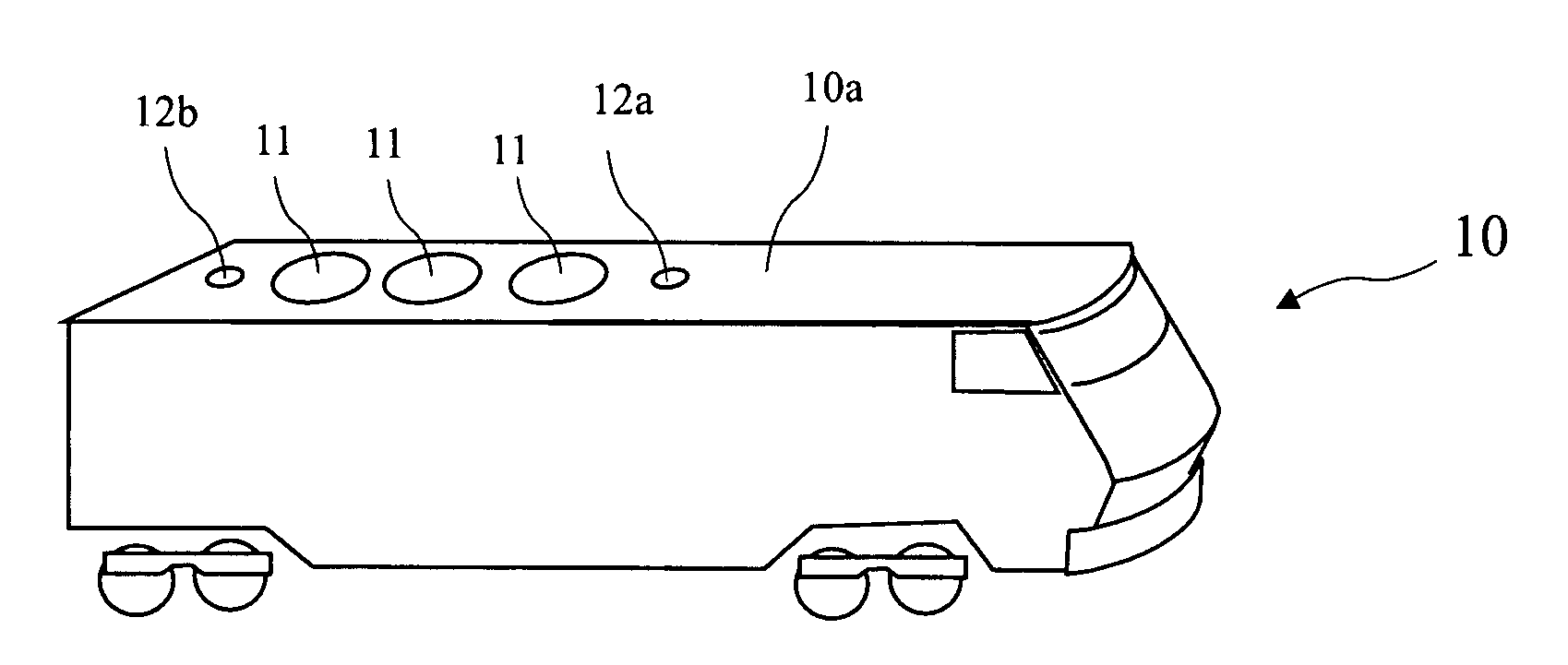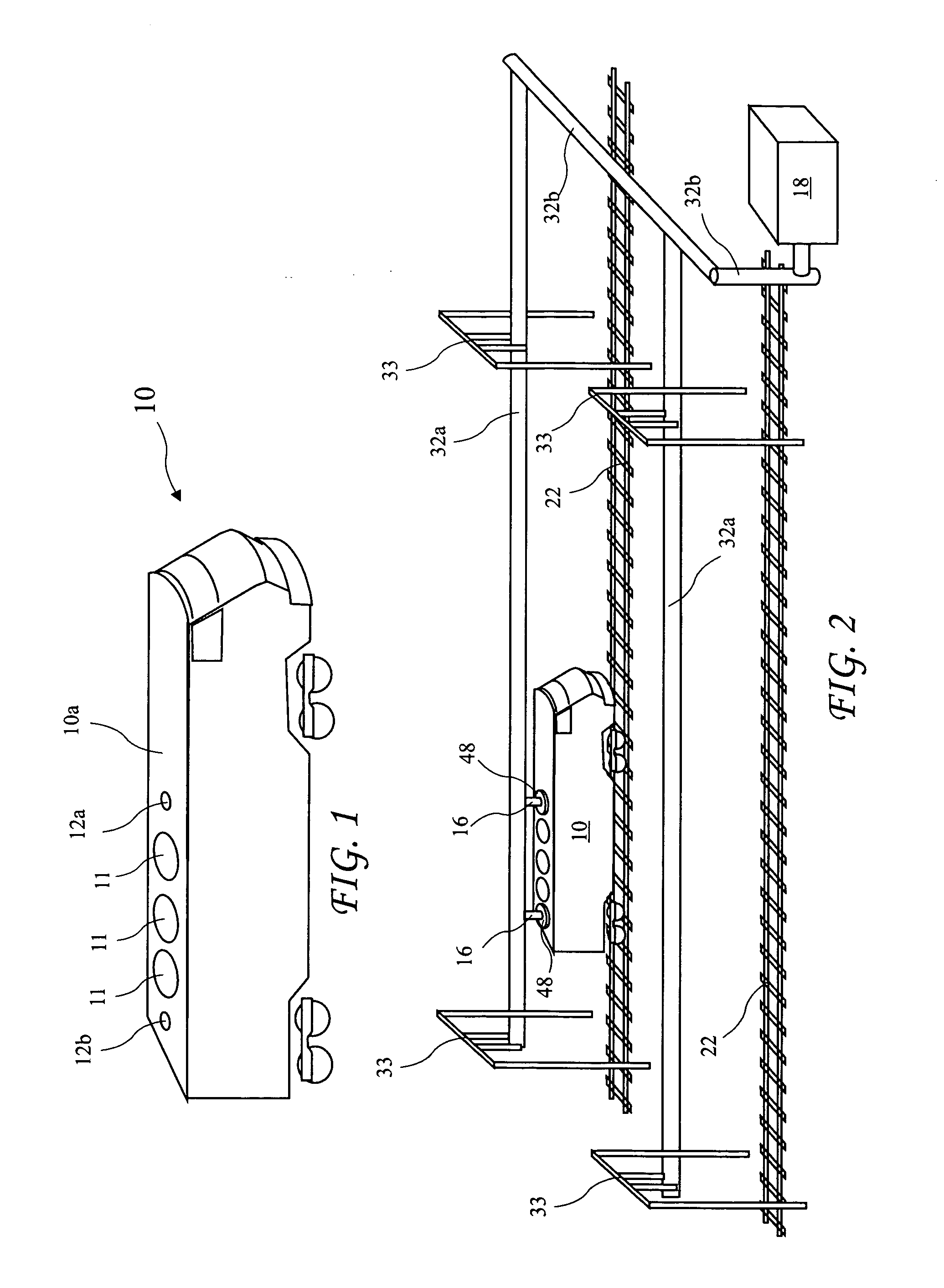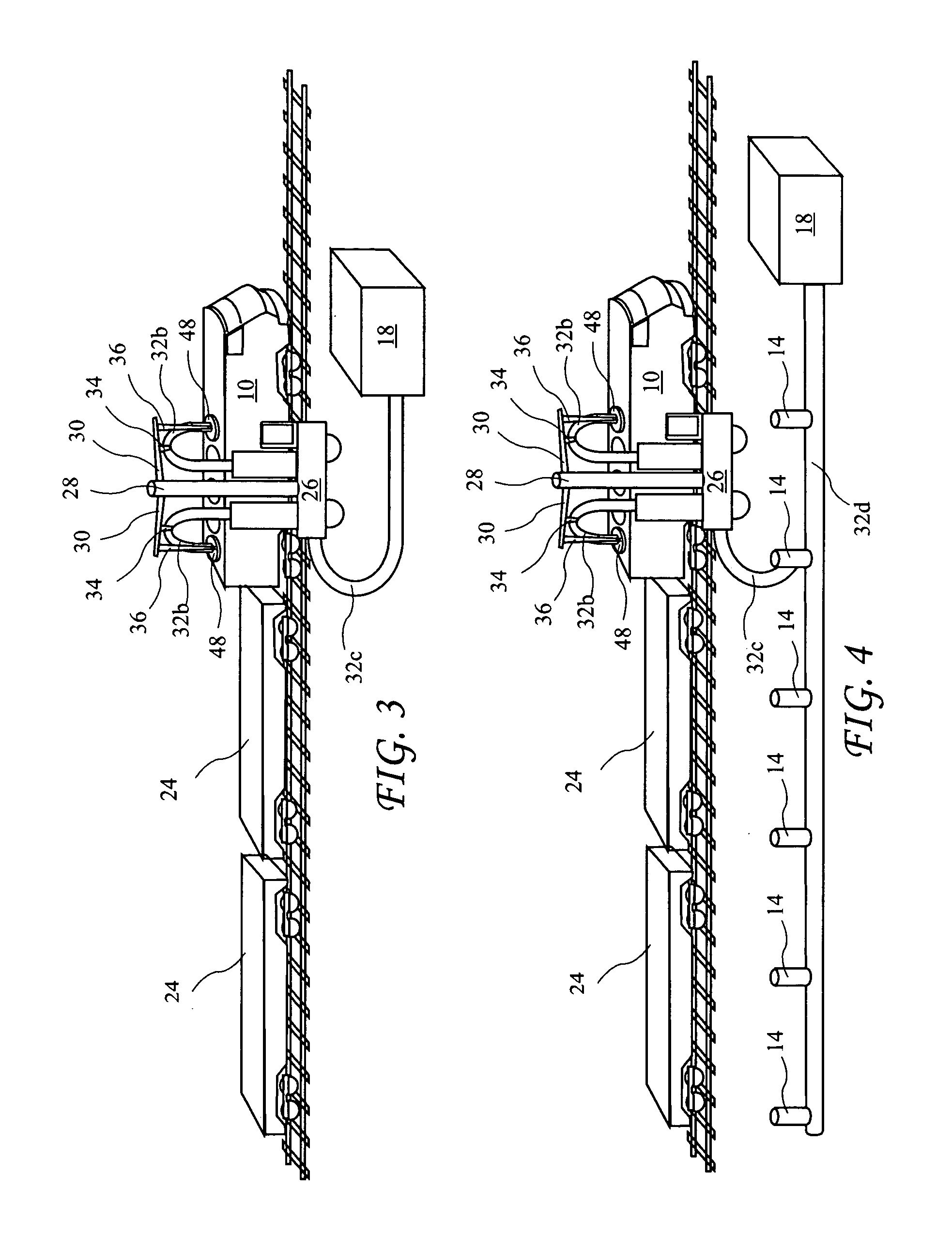Exhaust intake bonnet for capturing exhausts from diesel-powered locomotives
a technology for exhaust gas capture and diesel locomotives, applied in locomotives, machines/engines, transportation and packaging, etc., can solve the problems of physical damage to structures and equipment, no effective system for capturing locomotive emissions in these areas, and substantial health risks for railroad workers and residents of surrounding communities
- Summary
- Abstract
- Description
- Claims
- Application Information
AI Technical Summary
Benefits of technology
Problems solved by technology
Method used
Image
Examples
Embodiment Construction
[0044] The following description is of the best mode presently contemplated for carrying out the invention. This description is not to be taken in a limiting sense, but is made merely for the purpose of describing one or more preferred embodiments of the invention. The scope of the invention should be determined with reference to the claims.
[0045] The present invention comprises a bonnet for capturing diesel locomotive exhaust, and a system including the bonnet for capturing and processing the diesel exhaust. Recent studies of diseases and health problems tied to air-borne pollutants, including various forms of cancer, have identified geographic clusters with occurrences of such diseases and health problems significantly higher than statistical norms. These geographic clusters have been shown to conform closely to the geographic distribution of emissions plumes from railroad yards and test facilities. The present invention addresses a need for controlling emissions from diesel loco...
PUM
 Login to View More
Login to View More Abstract
Description
Claims
Application Information
 Login to View More
Login to View More - R&D
- Intellectual Property
- Life Sciences
- Materials
- Tech Scout
- Unparalleled Data Quality
- Higher Quality Content
- 60% Fewer Hallucinations
Browse by: Latest US Patents, China's latest patents, Technical Efficacy Thesaurus, Application Domain, Technology Topic, Popular Technical Reports.
© 2025 PatSnap. All rights reserved.Legal|Privacy policy|Modern Slavery Act Transparency Statement|Sitemap|About US| Contact US: help@patsnap.com



